
New Photos
November 27, 2005
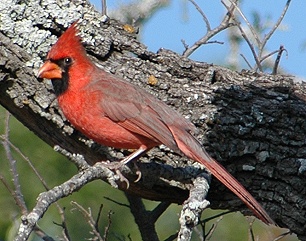 |
|
| In winter, we usually have 4-8 pairs of cardinals in the dry woods, while 3-4 pair nest there in the summer. Texas cardinal males usually have a grayish or brownish back, while cardinals in the northeast may have brilliant red backs. | |
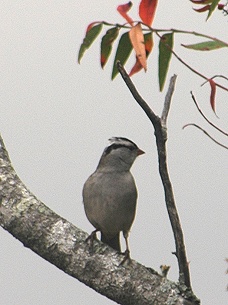 |
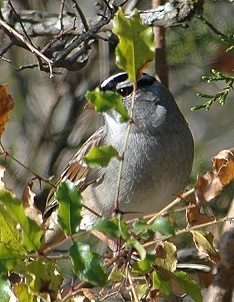 |
| One of the largest, and most noticeable, winter sparrows is the White Crowned, Zonotrichia leucophrys. They're bold, and by winter's end ignore human observers. This one has arrived before the last leaves blow away; it's perched in a flameleaf sumac near Fox Pavilion. | "Peekaboo!" through cedar elm twigs and leaves. These sparrows will be in large flocks in another month, occupying all brushy habitats including the back yard. They are easy to see around Fox Pavilion as well. |
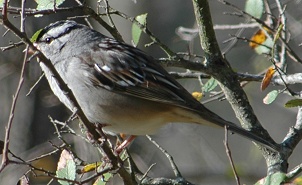 |
|
| In lateral view, in the large version of this picture, you can see that this individual is feathering out again after molt. Some of the wing feathers are just emerging from the shafts. | |
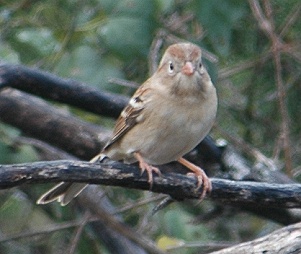 |
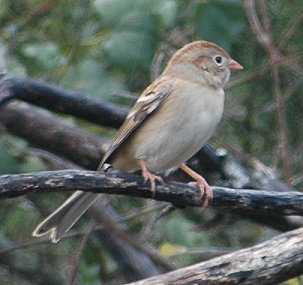 |
| Field Sparrows, Spizella pusilla, are one of the species that winters here, staying mostly to the dry woods and dry woods margin. They're smaller than some of the others, and they're the only sparrows I've seen at the hanging feeders...they will get right in there with the chickadees, titmice, and goldfinches. They are less shy than the Lincoln's sparrows. Compared to other sparrows, they have rather "blank" faces, and the white eye-ring gives them a wide-eyed look. | This side view of the face shows the eye-ring more clearly. |
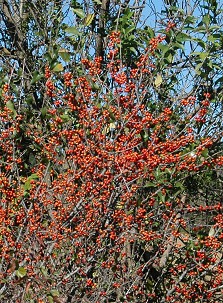 |
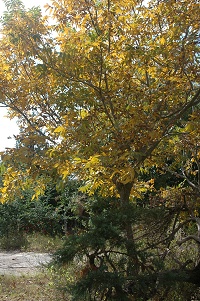 |
| Possumhaw, Ilex decidua drops its leaves in the fall and reveals branches covered with red or orange berries. The males have no berries, and just look like gray brush...but the females are beautiful in fencerows and woods, glowing with color when most things are gray/brown. | Pecans vary in fall color by individual and by year. At best, they can turn this golden yellow, a deeper shade than the local ash (which is clear yellow, as are the leaves of Mexican buckeye). |
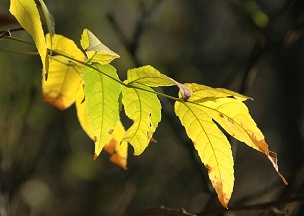 |
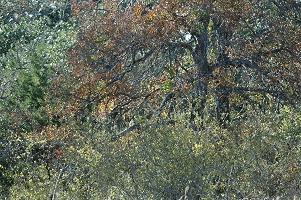 |
| Mexican buckeye Ungnadia speciosa blooms pink in the spring and turns this lovely bright yellow in the fall. In between it produces an interesting seed capsule and big shiny seeds. It requires no supplemental water, withstands pruning...and yet some people consider it "brush" to be bulldozed away. | For a few days in the fall, the small-leaved dry woods trees and shrubs produce this pointillist effect in subtles golds, coppers, and bronzes against the dark green of cedar and live oak. |
![]()

